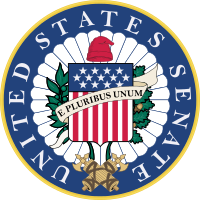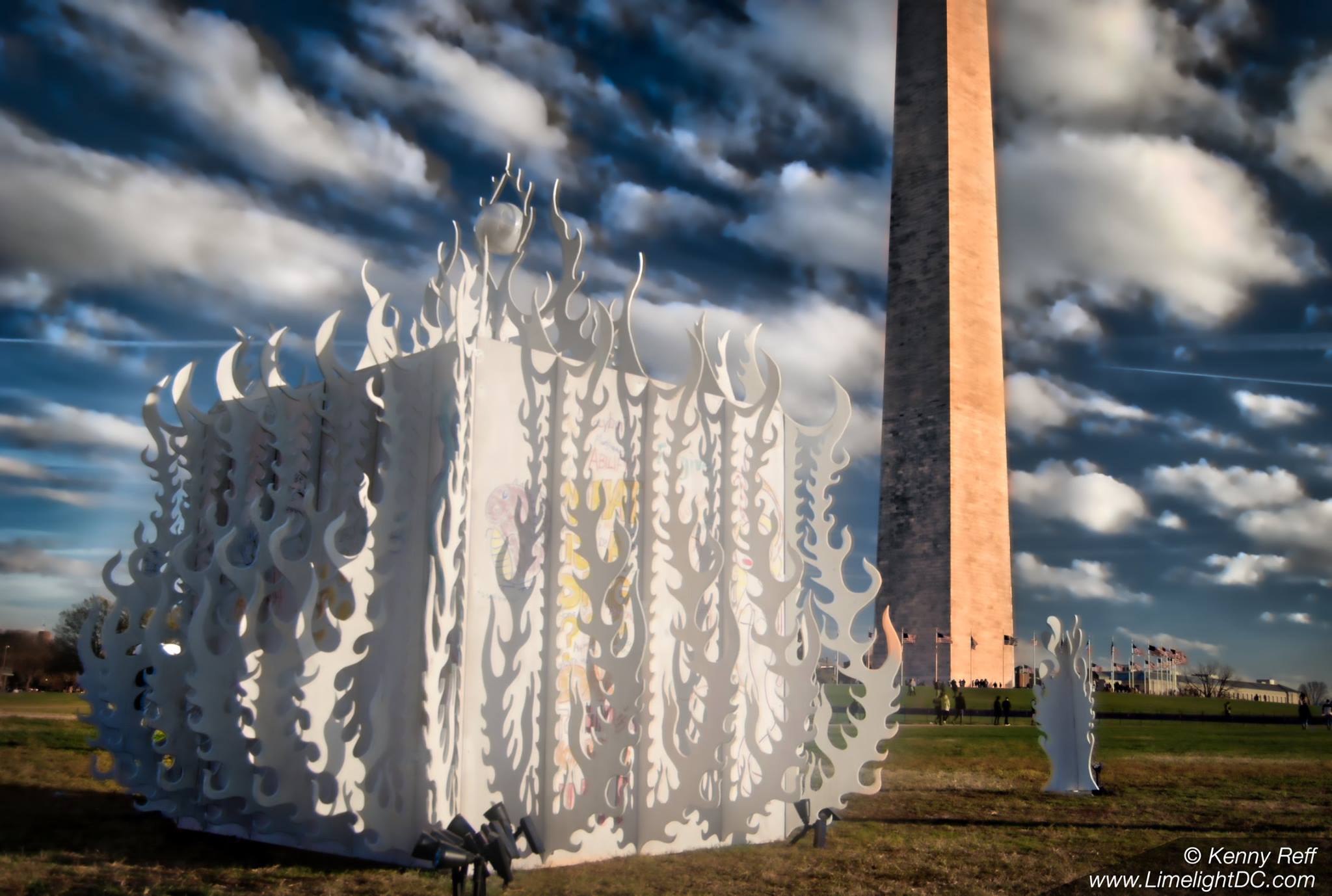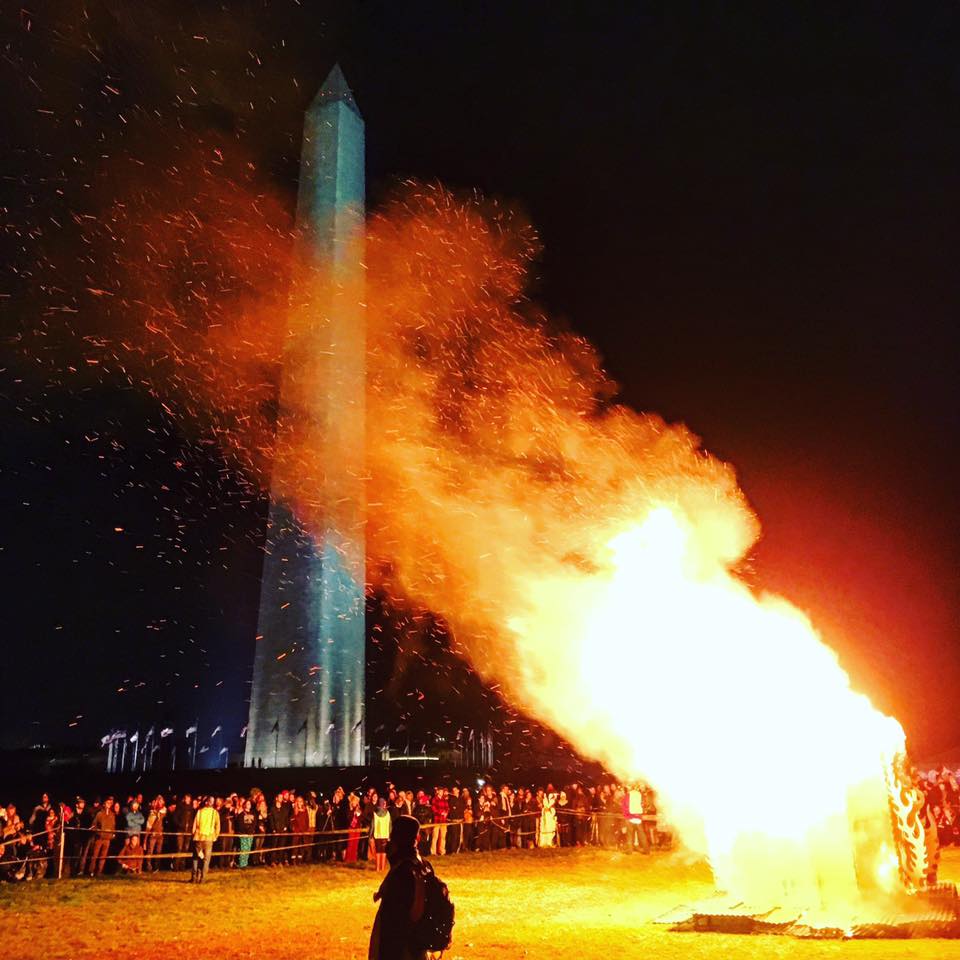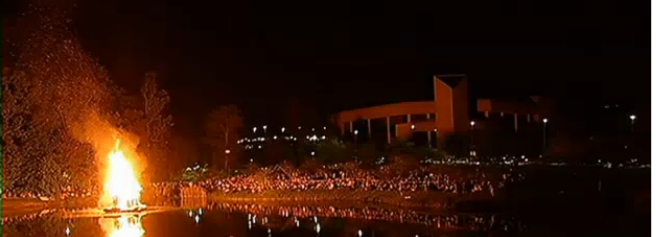|
FOR IMMEDIATE RELEASE
Wednesday, April 15, 2015
|
CONTACT:
ADAM EIDINGER (202)744-2671
NIKOLAS SCHILLER (202)805-1603
|
DC Residents Raise DC Liberty Pole on National Mall to Demand Equality
Nonstop Vigil to Hold Site without Permit Until April 20
WASHINGTON, DC – Early Wednesday morning, brave District of Columbia residents and supporters from Maryland and Virginia converged at 3rd Street on the National Mall near the U.S. Capitol to erect the 42-foot “DC Liberty Pole” to call attention to the lack of political equality for the 650,000 American citizens who live in DC. Choosing the day federal taxes are due and wearing red Phrygian caps— symbolic hats historically worn by freed Roman slaves and American colonists resisting British tyranny during the American Revolution, and pictorially shown on the seal of the U.S. Senate, U.S. Army, and numerous state seals—the disenfranchised denizens of the nation’s capital began a six-day, nonstop unpermitted DC Democracy Vigil. They seek to highlight why taxation without representation is antithetical to American values and to call on Congress to pass legislation that grants DC residents the same rights as Americans of the 50 states.
Angered by the unethical actions of members of Congress who paternalistically meddle in the lives of District of Columbia residents, the event will feature workshops and speak-outs to call attention to the plight of the only Americans who suffer taxation without representation. Unlike citizens of the 50 states who pay their taxes on April 15 and whose elected officials represent constituents’ interests in the federal legislature, the residents of the District of Columbia are denied the right to elect representatives in Congress despite being obliged to pay both federal and “state” taxes.
“Consent of the governed is a republican value that members of Congress have forgotten, and we’re here to remind the 535 members of Congress that we do not consent to taxation without representation,” says DC Cannabis Campaign Chairman, Adam Eidinger.
Over the years, numerous international organizations from the United Nations to the Organization for Security and Cooperation in Europe have called on the U.S. government to grant political rights to DC residents. The U.S. is the only country in the developed world that denies inhabitants of the capital city the same political rights enjoyed by those who live elsewhere in the country. DC residents fight and die defending freedom abroad but are denied the right to elect Senators and Representatives who send them into harm’s way.
In the 214 years that the District of Columbia has existed, Congress has sent two DC-related constitutional amendments to the states for ratification. One became the 23rd amendment, which allows DC residents to vote for the President. The second constitutional amendment, which would have provided DC residents with representation in Congress, was not ratified by enough states and expired in 1985. Activists contend that if Congress were to send another DC-related constitutional amendment to the States, it would be ratified.
“During the Revolutionary War colonists donned Phrygian caps and constructed Liberty Poles as acts of defiance against the British government’s unethical taxation of colonies without representation in British parliament, and we are here today to harken back to that original era of U.S. liberty, to do exactly as those brave Americans did, with this vigil,” says Adam Eidinger.
The citizens will use the space around the Liberty Pole as an autonomous free-speech zone and will hold daily open mics to grant those attending the vigil the opportunity to speak about why taxation without representation must end immediately in the District of Columbia. Organizers also brought a sewing machine to assist in the fabrication of Phrygian caps for visitors and decorations for the Liberty Pole.
The DC Democracy Vigil is scheduled to conclude on Monday, April 20, but may end in arrests before this date if the National Park Service objects to the vigil.
Organizers are using the hashtag #FreeDC in social media to share updates about the DC Democracy Vigil.
More information about the DC Cannabis Campaign, which successfully introduced and passed Ballot Initiative 71, can be found at www.DCMJ.org. The political committee will be disbanded later this month and convert to DCMJ, a DC-based community group.
More About Liberty Poles
A Liberty Pole is a tall wooden pole, often used as a type of flagstaff, planted in the ground, and surmounted by a Phrygian cap. The symbol originated in the immediate aftermath of the assassination of Roman dictator Julius Caesar by a group of Rome’s Senators in 44 BC. Liberty poles were often erected in town squares in the years before and during the American Revolution. During this time, often violent struggles over liberty poles erected by the Sons of Liberty in New York City raged for 10 years. The poles were periodically destroyed by the British, only to be replaced by the Sons of Liberty with new ones. The conflict lasted from the repeal of the Stamp Act in 1766 until the revolutionary New York Provincial Congress came to power in 1775. When an ensign was raised on a liberty pole, it was a calling for the Sons of Liberty or townspeople to meet and vent or express their views regarding British rule. The pole was known to be a symbol of dissent against Great Britain. During the Whiskey Rebellion, locals in western Pennsylvania would erect poles along the roads or in town centers as a protest against the federal government’s tax on distilled spirits, and evoke the spirit embodied by the liberty poles of decades earlier. The image of Liberty holding a pole topped by a Phrygian cap appears on many mid- and late-19th-century U.S. silver coins. Source: Wikipedia
More About Phrygian Caps
The Phrygian (pronounced FRI-GEE-AN) cap is a soft conical cap with the top pulled forward, associated in antiquity with the inhabitants of Phrygia, a region of central Anatolia. In early modern Europe it came to signify freedom and the pursuit of liberty through a confusion with the pileus, the felt cap of manumitted (emancipated) slaves of ancient Rome. Accordingly, the Phrygian cap is sometimes called a Liberty Cap and in artistic representations it signifies freedom and the pursuit of liberty.
In the years just prior to the American Revolutionary War of independence from Great Britain, the symbol of republicanism and anti-monarchial sentiment reappeared in the United States as headgear of Columbia, who in turn was visualized as a goddess-like female national personification of the United States and of Liberty herself. The cap reappears in association with Columbia in the early years of the republic, for example on the obverse of the 1785 Immune Columbia pattern coin, which shows the goddess with a helmet seated on a globe holding in a right hand a furled American flag topped by the liberty cap. The cap’s last appearance on circulating coinage was the Walking Liberty Half Dollar, which was minted through 1947 (and reused on the current bullion American Silver Eagle).
The U.S. Army has, since 1778, utilized a “War Office Seal” in which the motto “This We’ll Defend” is displayed directly over a Phrygian cap on an upturned sword. It also appears on the state flags of West Virginia (as part of its official seal), New Jersey, and New York, as well as the official seal of the United States Senate, the state of Iowa, the state of North Carolina and on the reverse side of the Seal of Virginia. Internationally, the Phrygian cap is used on the coat of arms of Argentina, Bolivia, Colombia, Cuba, El Salvador, Haiti, and Nicaragua. Source: Wikipedia
The DC Cannabis Campaign is the official campaign committee for Ballot Initiative 71. The campaign is a project of residents from across the District of Columbia, Drug Policy Action, and Dr. Bronner’s Magic Soaps.
###






